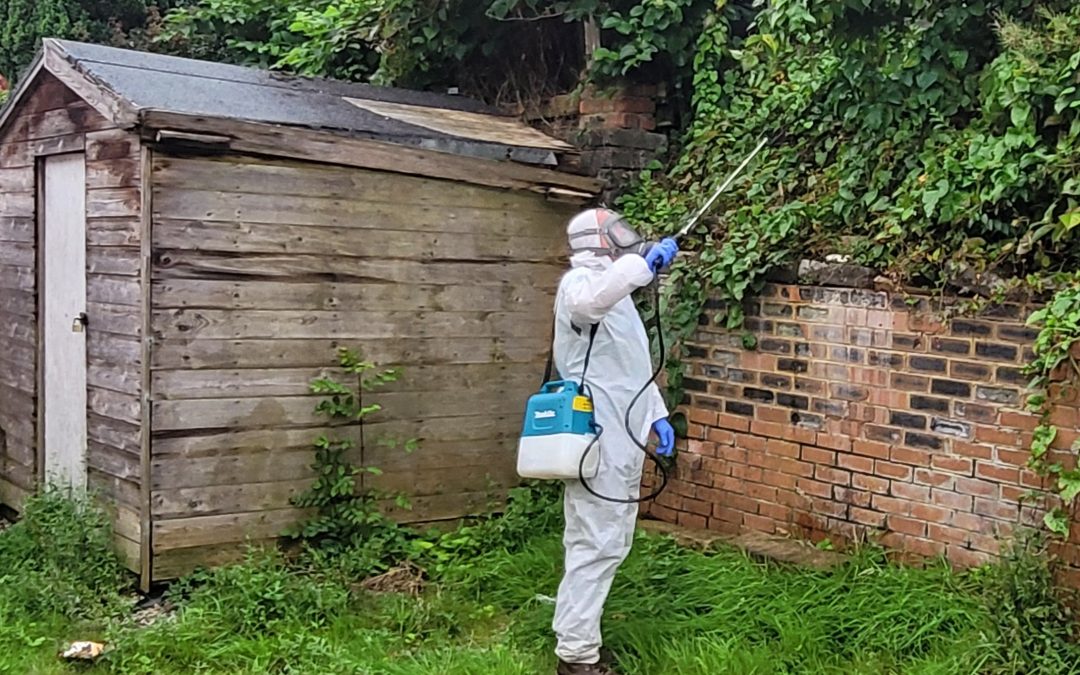Can you completely eradicate Japanese knotweed
Completely eradicating Japanese knotweed (Fallopia japonica) from an infested area is a challenging and long-term process, but it is possible with persistent and diligent management efforts. Eradication typically requires a combination of control methods and ongoing monitoring over several years.
The key to successfully can you completely eradicating Japanese knotweed includes the following steps:
- Professional Assessment: Engage a qualified specialist or an invasive plant management professional to conduct a thorough site survey and develop a tailored management plan. The expert will assess the extent of the infestation and recommend the most appropriate control methods.
- Chemical Treatment: Glyphosate-based herbicides are commonly used for controlling Japanese knotweed. These herbicides are systemic and effectively translocate through the entire plant, including the underground rhizomes. Multiple applications of herbicides over several growing seasons are usually required to weaken and deplete the rhizome system.
- Excavation: In some cases, excavation of Japanese knotweed-infested soil may be necessary, especially if the plant is growing close to structures or infrastructure. The excavated soil must be disposed of properly at a licensed landfill site.
- Monitoring and Follow-Up: Continuous monitoring is crucial to ensure that any regrowth or new plants are quickly addressed. Multiple treatments over several years are often necessary to eliminate all remnants of the knotweed population.
- Preventive Measures: Prevent the introduction of Japanese knotweed to new areas by being careful not to transport contaminated soil or plant material. Monitor the surroundings to prevent re-infestation.
It’s important to recognize that complete eradication may not be achievable in some circumstances, especially if the knotweed infestation is extensive or if it has spread to inaccessible areas. In such cases, the goal of management efforts may shift from complete eradication to containment and long-term control.
Successfully eradicating Japanese knotweed requires a proactive and consistent approach, ideally under the guidance of professionals with expertise in invasive plant management. Timely intervention and ongoing monitoring are essential to prevent the resurgence of knotweed and protect the environment and property from its impacts.
IS Glyphosate-based herbicides THE BEST TREATMENT METHOD FROM THE ABOVE ?
The effectiveness of glyphosate-based herbicides for treating Japanese knotweed (Fallopia japonica) largely depends on the specific situation and the extent of the infestation. Glyphosate is one of the most commonly used and effective herbicides for controlling a wide range of weeds, including Japanese knotweed. It is a systemic herbicide that is absorbed by the plant and translocated throughout its entire system, including the extensive underground rhizomes.
The advantages of using glyphosate-based herbicides for Japanese knotweed control include:
- Systemic Action: Glyphosate targets the entire plant, ensuring that the herbicide reaches the rhizomes, where knotweed stores its energy reserves. This leads to more effective control and depletion of the rhizome system over time.
- Professional Application: Glyphosate herbicides are usually applied by licensed professionals who have the expertise to determine the appropriate timing and application rate for maximum effectiveness.
- Multiple Applications: Japanese knotweed is persistent, and multiple herbicide applications are often required over several growing seasons to achieve significant control.
- Selective Application: Glyphosate is non-selective, meaning it affects a wide range of plants. However, with careful application by professionals, it can be used in targeted areas to minimize impacts on non-target plants.
While glyphosate-based herbicides have proven to be effective in many situations, it’s essential to consider other factors as well:
- Environmental Concerns: Glyphosate is a broad-spectrum herbicide and can affect other plant species. Its use requires adherence to safety guidelines and local regulations to minimize environmental impacts.
- Risk to Non-Target Plants: Glyphosate can harm non-target plants if not applied carefully, leading to a reduction in biodiversity in treated areas.
- Rhizome Persistence: Japanese knotweed has a resilient rhizome system, which can make complete eradication challenging with any method, including glyphosate application.
For the best treatment method for Japanese knotweed, it’s crucial to consult with invasive plant management professionals who can assess the specific situation and recommend the most appropriate combination of control methods. These methods may include glyphosate-based herbicides, excavation, and other management techniques to achieve the desired level of control while minimizing potential risks to the environment and non-target species.
